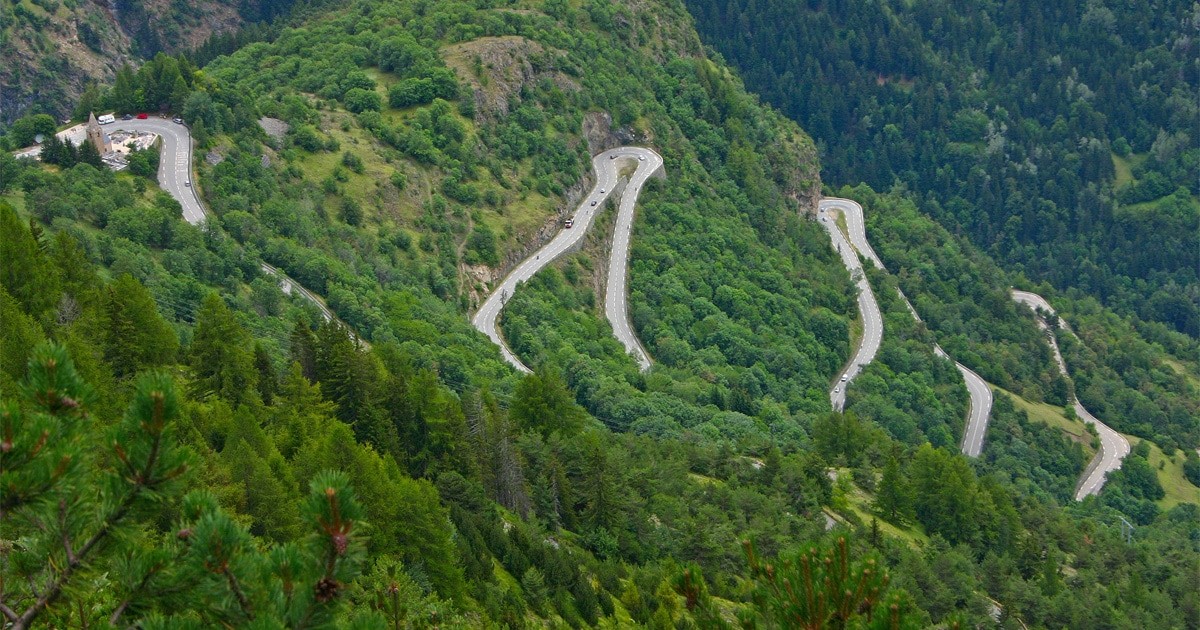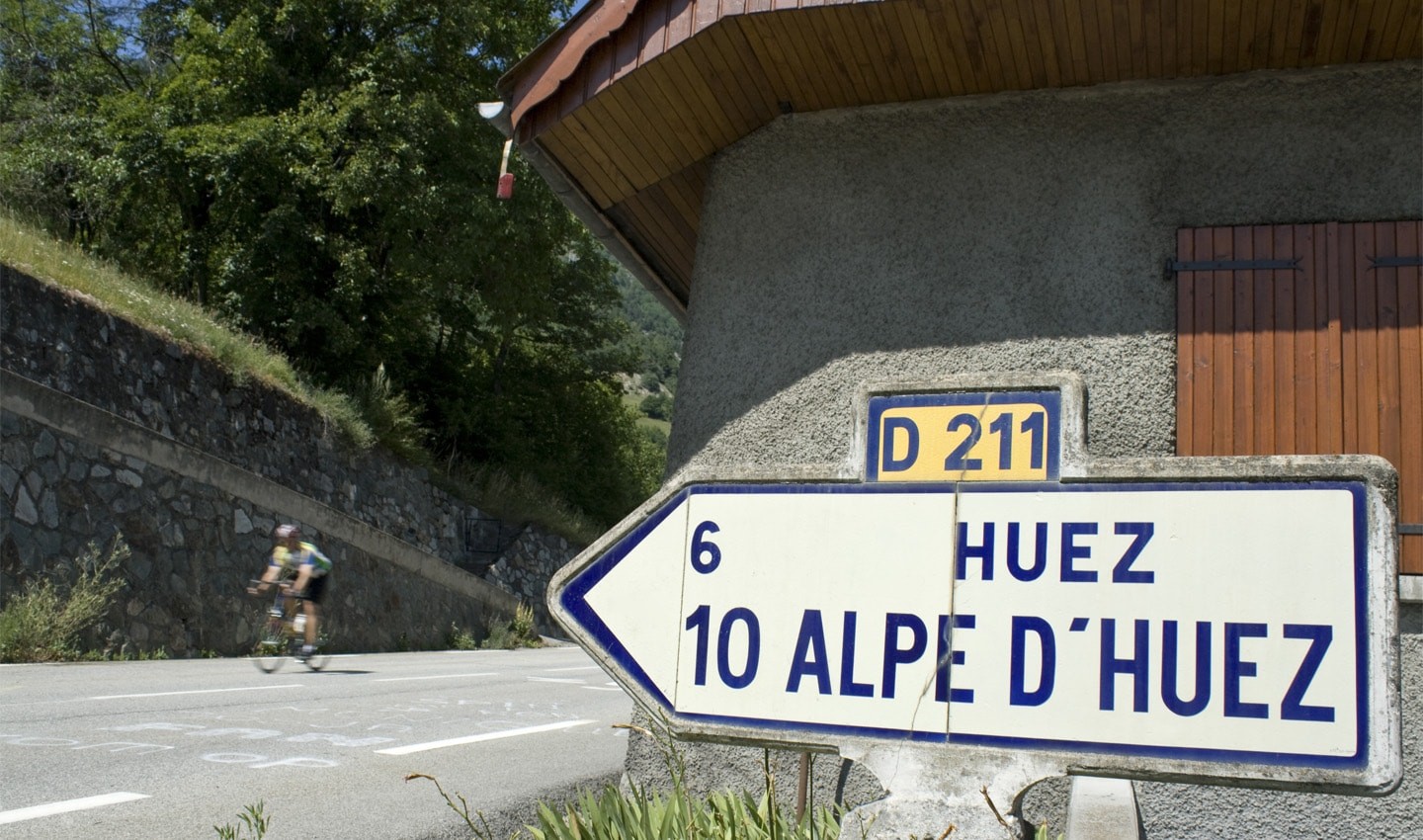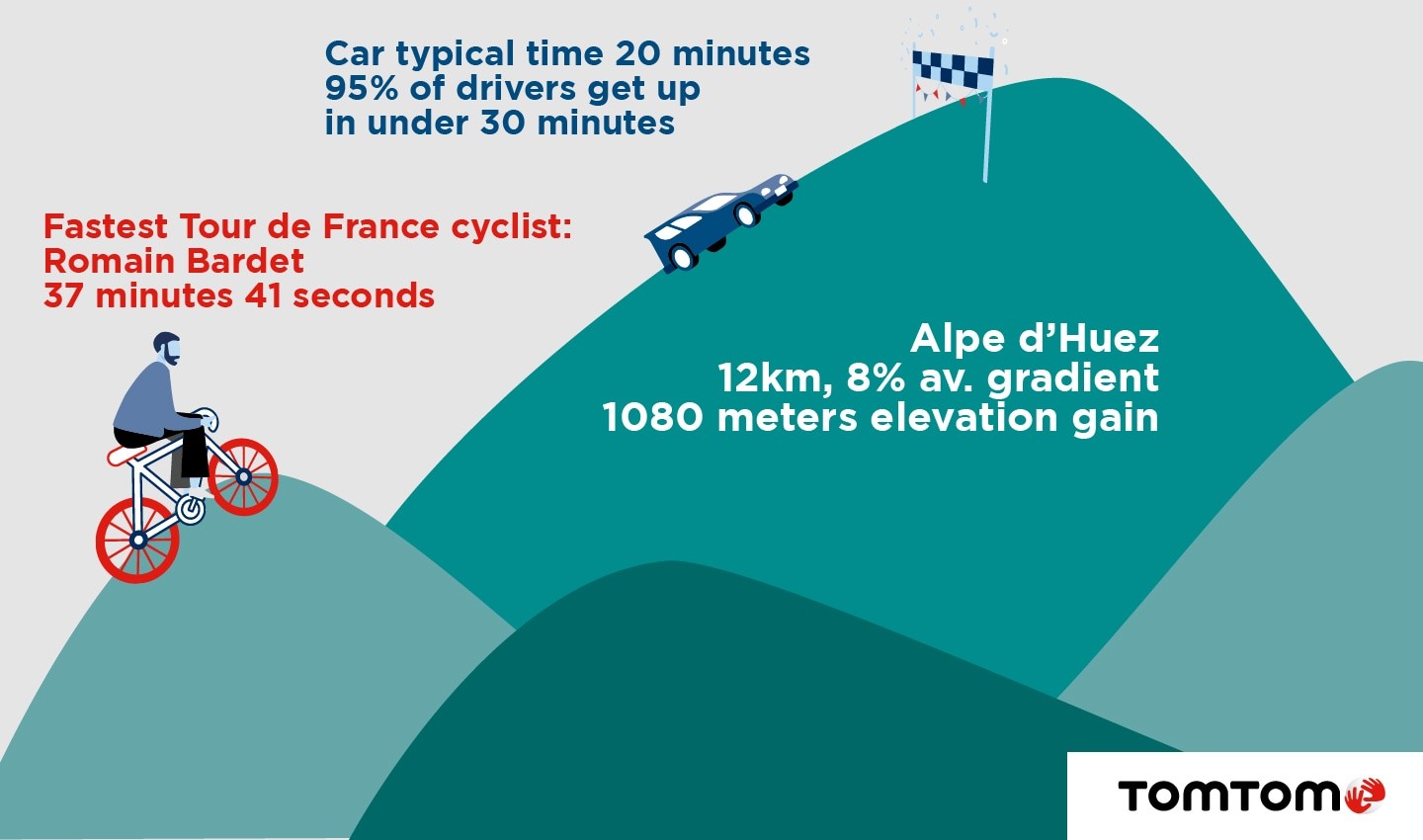What's faster up Alpe d'Huez, a car or a Tour de France cyclist? We crunched the numbers
&w=256&q=90)

Normally, TomTom spends its time crunching the numbers on traffic data to help you get around quickly and easily in your car. But have you ever wondered about how travel times in a car compare to, say, a cyclist? Not just any cyclist, but one of the world’s best? With the Tour de France heading to the Alpes, we wondered what the answer is.
As Tour de France fans will know, Alpe d’Huez is one of the Tour’s most grueling climbs. While not always included in the race, when it is, it pushes riders to their limits and is often the majestic backdrop of the Tour’s most exciting moments. And this Thursday, we’re set for more fireworks as the race takes on the iconic climb.
It’s a tiring feat, by any standards. Not only does the Alpe d’Huez represent a pinnacle of sporting achievement – it’s also known for its beauty and has the honor of being the first mountaintop finish in Tour de France history. It first appeared in the Tour de France in 1952 and has been included in the race 31 times since then.
It’s often the site of many Tour de France battles, such as ‘the look’ between Lance Armstrong and Jan Ullrich, or when LeMond and Hinault crossed the finish line together in 1986.
This year the world’s best cyclists will complete the final part of a whopping 165 kilometers of racing by throwing themselves up the French mountain to reach the finish line. It’s certainly easier driving up the Alpe, but is it much quicker? Probably. But if you’ve ever wondered how much faster a car gets up Alpe d’Huez compared to the world’s best cyclists, we have the answer. TomTom crunched the numbers to find out.

The Alpe d’Huez was the first mountaintop finish in Tour de France history.
What's faster up Alpe d’Huez, a car or a cyclist?
According to traffic data compiled by TomTom, the typical car journey to the peak of Alpe d’Huez, which is around 12 km (7.5 miles) from bottom to top, takes around 20 minutes. Most people get up the 1,040 meters (3,400 feet) of elevation in under 30 minutes (95th percentile), though.
Data compiled by fitness app Strava, shows top cyclists cover the 12 km (7.5 mile) KOM Segment in under 40 minutes – only 20 minutes slower than the fastest car journeys. It’s just a handful of minutes longer than an average car journey. That is an astounding number – especially when you consider the steepness of the route.

The fastest time recorded by a current Tour de France road cyclist up the 21-hairpin bends and average gradient of 8%, is 37 minutes and 41 seconds. That time was recorded by French professional rider Romain Bardet. Bardet has remained quiet in this year’s tour so far, but is throwing down the gauntlet, saying in a recent press conference that "This is where the first hierarchy will take shape."
Bardet’s KOM attempt on Strava saw him average just shy of 20 kph (12 mph). Cars on the other hand, average around 40 kph up the French mountain.
Earlier this month, former professional Stefan Kirchmair took the top spot on Strava’s KOM leaderboard away from Bardet with a time of 37 minutes 30 seconds.
The fastest ever ascent of the French col during a Tour stage, was in 1997, when Marco Pantani completed a 13.7 km version of the route in 37 minutes. Nearly 2km longer than Bardet’s attempt, and the same finishing time.
But let’s spare a moment for the non-professional riders that take on the challenge, shall we? More than 103,000 people have given it a go, and it’s normal for it to take many hours to complete the ascent. It’s something to think about – perhaps it’s time to bring out the ol’ bike and have a go? Okay, okay, so maybe you won’t make it up in 40 minutes, but there’s always the satisfaction of the achievement. And if you’re really in a rush, maybe it’s best to stick to the car.
* Written by Rosalie Wessel. Additional reporting and editing by Matthew Beedham.
**Editor’s note: Our methodology for this quick comparison was simple. We looked first at Strava to find the King of the Mountain (KOM) times and the segment route itself for the Alpe d’Huez climb.
We then replicated this route in two of TomTom’s traffic information and data programs. This gave us live traffic data, which showed us the typical travel times and average times taken to drive the Strava KOM route.
The drive time and speed data for the route was taken from the last full week of June, before the Tour de France started. We looked at drive times between 9am and 9pm each day from Monday to Sunday. The averages are based on this time frame.People also read
)
How maps can save connected cars from data outages
)
Chaotic airports or congested roads? How Europe will travel in 2022
)
Enjoy the open road: Tips to avoid common motorcycling pitfalls
* Required field. By submitting your contact details to TomTom, you agree that we can contact you about marketing offers, newsletters, or to invite you to webinars and events. We could further personalize the content that you receive via cookies. You can unsubscribe at any time by the link included in our emails. Review our privacy policy.